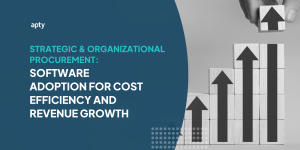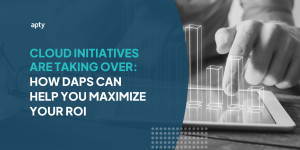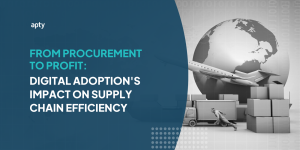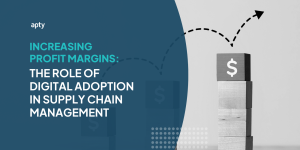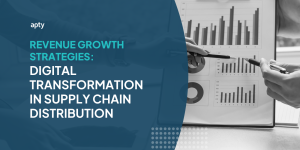In the bustling corridors of today’s hyper-competitive business landscape, procurement isn’t merely a function—it’s a strategic powerhouse. A recent survey by McKinsey & Company indicated that organizations harnessing the full potential of Procurement Software saw an upswing of up to 15% in their operational efficiency, directly contributing to top-line Revenue Growth. So, what’s behind this seismic shift?
Once tucked away in the corners of corporate operations, procurement has broken free from its siloed existence. However, the whirlwind of globalization coupled with the demand for rapid technological agility has placed it center stage. In a telling study by Gartner, it was unveiled that archaic procurement processes can erode as much as 12% of corporate spending. That’s a financial pitfall no modern enterprise can afford.
By infusing technology into the procurement lifecycle, businesses are not only set to tackle existing hurdles but also to redefine their procurement strategies for the future. In this discussion, we’ll explore how this software becomes the catalyst for unparalleled cost efficiency and a foundation for robust revenue growth. By the end, it will become evident that embracing such technological advancements isn’t a mere choice; it’s an imperative for contemporary businesses aiming for excellence.
Strategic & Organizational Procurement

The Role of Strategic Procurement

Strategic procurement is not just about buying goods and services; it’s a holistic approach that aligns procurement activities with an organization’s overall strategic goals. According to a report by McKinsey, companies that embrace strategic procurement achieve cost savings of up to 15% and often experience a 20% increase in supplier performance. Companies should deepen their engagement with the business to raise awareness of how additional savings can be generated through collaborative approaches and how these savings are reflected in the P & L.
Companies can rapidly generate sustained savings across virtually all categories by rethinking their approach to short-term procurement efforts by applying digital solutions and the right incentives and mindsets.
Example: Apple Inc. is known for strategically managing its supply chain to ensure a steady flow of components for its products. Apple’s supply chain is a complex and intricate system responsible for the manufacturing and distribution its products. It is a global network of suppliers, manufacturers, and distributors who collaborate to ensure that Apple products are delivered to consumers quickly and effectively. Apple has achieved operational excellence and reduced supply chain risks by establishing long-term relationships with key suppliers like Foxconn.
Organizational Procurement Structure
Diverse Organizational Structures
Organizations adopt various procurement structures based on their specific needs. For instance, a centralized procurement structure, like that of Procter & Gamble, allows for greater control and standardization across purchasing decisions. This structure allows for greater control and standardization across purchasing decisions. P&G operates through five industry-based Sector Business Units (SBUs): Baby, Feminine, and Family Care; Beauty; Health Care; Grooming; and Fabric and Home Care.
Example: Toyota’s decentralized structure empowers local units to make procurement choices that suit their unique requirements. This structure involves decentralizing decision-making power and granting more authority to overseas affiliates, reducing the concentration of power in Toyota’s Japanese headquarters.
Toyota’s revised organizational structure has three components: global hierarchy, business units, and regional heads. While Toyota headquarters in Japan is responsible for making most decisions, some power was also given to business units and regional heads. This structure provides greater flexibility than the old centralized, hierarchical company structure, allowing Toyota to respond more quickly to regional market conditions.
Impact on Software Adoption
The procurement structure’s choice directly impacts how efficiently software, like Procurement Software, is adopted throughout the organization. A flexible and adaptable procurement structure enables faster and smoother software integration, facilitating strategic goals.
By examining these real-world examples and practices, organizations can better understand the value of strategic and organizational procurement and make informed decisions about their procurement strategies.
Procurement Software: A Game-Changer
Understanding Procurement Software

In a world shaped by relentless technological progress, specific software solutions have emerged as vital cogs in the machinery of modern businesses. Procurement Software is one such innovation, transforming traditional procurement landscapes.
But what exactly is Procurement Software?
Procurement Software is a digital tool crafted to manage and amplify an organization’s entire procurement lifecycle. But it’s not just about digitizing manual tasks. It’s about elevating the procurement function into a streamlined, data-driven, strategic operation.
Here’s what this software brings to the table:
Supplier Management: Per Spend Matters’s report, companies using advanced supplier management features have improved their supplier lead times by up to 35%. The software ensures that organizations identify and foster lasting relationships with top-tier suppliers.
Purchase Order Processing: Leveraging automated workflows can diminish errors. According to Procurement Leaders, companies that fully adopt digital purchase order processes see up to a 60% reduction in processing delays.
Spend Analysis: With the Aberdeen Group highlighting that best-in-class companies spend 21% less than their peers due to insightful spend analysis, it’s evident that real-time analytics tools embedded in modern Procurement Software play a pivotal role in budget optimization.
The evolution from manual spreadsheets and disjointed solutions to Procurement Software isn’t just about technology but a strategic shift. Historical reliance on fragmented systems often led to operational hiccups and missed strategic opportunities. With the advent of Procurement Software, the narrative is shifting. Companies now have the means to unify their procurement operations, making them more agile, transparent, and future-ready.
Top 7 Procurement Software in 2023

Netsuite by Oracle: Netsuite offers a comprehensive procurement solution that helps businesses manage their purchasing processes, suppliers, and inventory. For example, Iterable, a growth marketing platform, uses NetSuite to improve its customer segmentation and personalization efforts, significantly improving open, click-through, and conversion rates. This demonstrates how a robust procurement software solution can contribute to overall business success by enhancing customer experiences.
Dynamics 365 by Microsoft: Dynamics 365 includes procurement management capabilities that allow businesses to streamline their purchasing processes, manage suppliers, and track inventory. A real-life example of the impact of procurement software can be seen in the case of Headway, a mobile app development company. By leveraging Dynamics 365’s features, Headway improved its onboarding journey, increasing open rates, app purchases, and conversion rates.
Qntrl by Zoho: Zoho’s procurement software, qntrl, helps businesses automate their procurement processes, manage suppliers, and track inventory. A study by Bain & Company found that companies with “significantly above average” customer experiences perform better financially than their competitors. Using qntrl to enhance their procurement operations, businesses can contribute to a better overall customer experience, leading to improved financial performance.
Workday HCM: Workday HCM offers procurement management features that help businesses streamline their purchasing processes, manage suppliers, and track inventory. A positive customer experience can have long-lasting effects on business relationships. For example, Zendesk found that 24% of consumers continue doing business with vendors for two or more years after a positive encounter. By using Workday HCM to improve their procurement operations, businesses can contribute to a better overall customer experience, increasing customer loyalty and retention.
Odoo: Odoo’s procurement software helps businesses automate their purchasing processes, manage suppliers, and track inventory. A study by Qualtrics XM Institute found that nearly 90% of consumers trust a company whose service they’ve rated as “very good” to take care of their needs. By using Odoo to enhance their procurement operations, businesses can contribute to a better overall customer experience, leading to increased trust and loyalty from their customers.
ShippingEasy: A shipping and order management platform can help businesses streamline their procurement processes by automating order fulfillment and tracking. A study by Bain & Company found that a customer is four times more likely to switch to a competitor if their problem is service-based. By using ShippingEasy to improve their procurement operations, businesses can contribute to a better overall customer experience, reducing the likelihood of customers switching to competitors.
SAP Ariba: SAP Ariba is a leading procurement software solution that helps businesses manage their purchasing processes, suppliers, and inventory. A study by Qualtrics XM Institute found that 89% of companies with “significantly above average” customer experiences perform better financially than their competitors. By using SAP Ariba to enhance their procurement operations, businesses can contribute to a better overall customer experience, leading to improved financial performance.
The Impact on Cost Efficiency

When discussing the fiscal health of an organization, efficiency, and cost containment often lead the conversation. And in the procurement realm, the imperative to operate cost-effectively has never been more pronounced. Here’s where Procurement Software shines as a beacon of fiscal prudence:
Streamlined Operations: Transitioning from manual to automated procurement can significantly reduce operational costs. A report by The Hackett Group highlights a 55% decrease in operating costs for businesses using mechanical procurement systems.
Data-Powered Negotiations: Using data-driven insights, organizations can secure better deals. A CAPS Research study found that such insights lead to 18% more cost-effective negotiations than traditional methods.
Risk Management: Predictive analytics in Procurement Software can help identify potential supply chain disruptions. Bain & Company reports a 30% reduction in disruptions for companies using advanced risk mitigation tools.
Strategic Sourcing: Embracing strategic sourcing practices via procurement platforms leads to long-term cost savings. Gartner found a 15% reduction in supplier-related costs for companies employing these practices. Procurement Software offers immediate and long-term cost efficiencies, making it a sound investment for businesses aiming to optimize their bottom line.
Driving Revenue Growth

While cost-saving is often the primary focus when considering the adoption of Procurement Software, its influence on revenue growth should be noticed. The following points highlight how optimized procurement processes, directly and indirectly, bolster an organization’s revenue streams.
Optimized Procurement as a Revenue Driver
Many view procurement solely as a cost center. However, a Harvard Business Review study argues that companies with optimized procurement processes realize a higher profit margin, by an average of 15%, compared to those with less sophisticated processes. Improved supplier relationships, reduced production delays, and better-quality materials can enhance product offerings, increasing customer loyalty and revenue.
Supplier Management and Negotiation
High-quality supplier relationships aren’t just about cost but value. With Procurement Software, businesses can easily manage supplier performance and negotiations, ensuring they get the most from their partnerships. According to a study by McKinsey & Company, industries that utilized advanced supplier management functions within their procurement software experienced a 7% increase in revenue due to enhanced product quality and faster time-to-market.
Strategic Procurement for Quality and Satisfaction
Elevated product quality and customer satisfaction are often the byproducts of strategic procurement. The study by Accenture reveals that organizations focusing on strategic procurement have seen an average increase of 10% in customer lifetime value. This, in turn, boosts customer retention and expands revenue streams. By harnessing the multifaceted benefits of Procurement Software, companies save money and make more of it. This software allows businesses to invest wisely, ensuring immediate savings and sustainable revenue growth.
The “Digital Adoption” Solution
The Role of Digital Adoption in Procurement

The efficacy of any Procurement Software lies not just in its capabilities but also in its utilization. No matter how advanced or robust your software is, the investment can become a financial sinkhole without effective digital adoption. Digital Adoption serves as the linchpin in harnessing the full potential of Procurement Software, aligning it seamlessly with strategic and organizational objectives.
Introduction to Digital Adoption Platforms (DAPs)
Digital adoption platforms (DAPs) serve as pivotal tools. DAPs are specialized platforms designed to simplify and enhance the user experience throughout their journey with a software application. From onboarding to in-depth training and ongoing support, DAPs provide an integrated ecosystem that amplifies Software Adoption, particularly for complex Procurement Software systems.
Benefits of Using DAPs for Procurement Software
Accelerated Learning
Digital adoption platforms provide guided, in-app tutorials and step-by-step instructions. These built-in features significantly reduce the learning curve for users, allowing them to become proficient more quickly.
Improved Productivity
DAPs offer real-time assistance within the software interface, obviating the need for separate, time-consuming training sessions. This immediate help translates into increased efficiency and productivity.
Higher User Satisfaction
With a more intuitive and user-friendly experience, DAPs improve overall user satisfaction. Higher satisfaction levels inherently lead to greater Software Adoption rates, maximizing the software investment.
Data-Driven Insights
DAPs are not just user aids but also powerful analytics tools. They offer actionable insights into user behavior, enabling organizations to finetune processes, workflows, and even software configurations to meet organizational goals better.
Successful Implementation of DAPs
The implementation of a DAP should be more strategic than tactical. Here’s how:
Alignment with Strategy: Ensure the DAP implementation aligns with your procurement process’s operational needs and strategic vision.
Customization: Every organization is different, and so are its procurement needs. DAPs should be tailored to fit the unique demands of your procurement processes and software solutions.
User Feedback: An iterative process incorporating user feedback can be invaluable in adapting the DAP to meet user needs and strategic objectives effectively.
Training and Support: Even with the most intuitive DAPs, ongoing training and robust support are crucial to ensure users can leverage the platform effectively for maximum gains.

